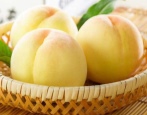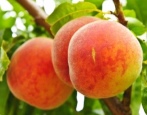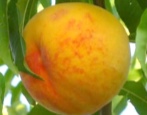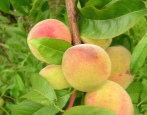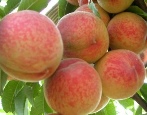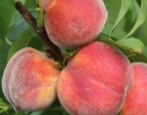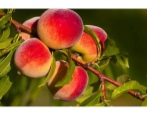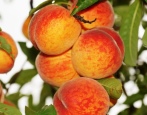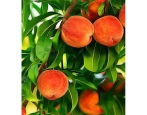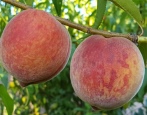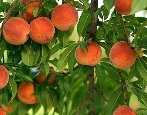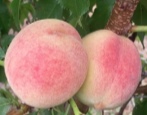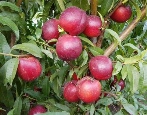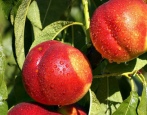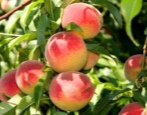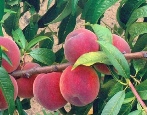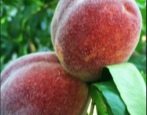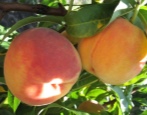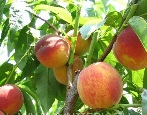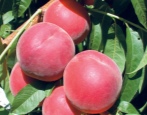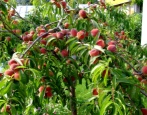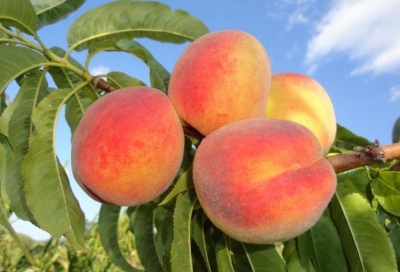
- Authors: USA (New Jersey)
- Growth type: medium-sized
- Ripening period: mid-early
- Appointment: for fresh consumption
- Yield: high
- Marketability: high
- Transportability: good
- Separability of the bone from the pulp: semi-detachable
- Winter hardiness: high
- Fruit weight, g: 110-150
Collins is a popular American peach variety among gardeners. It is not too difficult to grow, but summer residents still have to take into account some of the subtleties.
Breeding history
Collins' homeland is New Jersey (USA). It was there, at one of the experimental stations, with the help of pollination of the Jersey Land variety, that this variety was obtained. They took it out in 1955. Currently, it is not registered in the State Register of Varieties of the Russian Federation, but nevertheless it is often grown in amateur gardens in the south of Russia, the North Caucasus and Ukraine.
Description of the variety
The Collins peach crop is a medium layer. Most often, trees do not grow taller than three meters. The crown is cupped, with medium foliage. The bark is colored brown, but the shoots are mostly green. The leaves have an elongated lanceolate shape, their apex is rather narrow. The color is dark green, there is a slight glossy sheen. The average length of the leaf is 16 centimeters, but they are 5 cm wide.
The diameter of the flowers is 2.5-3 centimeters. Flowers are goblet, five-petal. Their color is white with a pink tint. During flowering, whole clouds of insects curl around the tree, as the flowers emit a strong aroma.
Fruit characteristics
Collins peaches are of medium size. The minimum weight is usually 110 grams, and the average weight is 130. But often on the trees of the variety, fruits of 150-155 grams also grow. Rounded peaches have a yellow cover color, but on the sunny side there is a pink blurred blush. The peel of the product is dense, very velvety, pleasant to the touch. Delicate juicy pulp is colored yellow. A rough bone is separated from the contents only when considerable effort is applied.
The harvested fruits can be stored for up to a week. Peaches have a decent level of transportability and marketability. It is customary to eat them fresh.
Taste qualities
Collins bears fruit with a pronounced mouth-watering flavor. Their taste is very harmonious, more sweet, but there is also a clear sourness. The variety was rated 5 points. Peaches have a table purpose.
Ripening and fruiting
Collins' bloom starts in mid to late April. The mid-early variety ripens by mid to late July. Having entered into fruiting, the peach brings rich harvests annually.
Yield
Collins is a very fast-growing tree, because with proper care, it will begin to bear its first fruits in a year or two. Yields are initially low, but mature trees will yield 40-50 kilograms of fruit. Unfortunately, the lifespan of this peach variety is short - no more than 20 years.
Growing regions
This variety of peaches is intended for the North Caucasus region. However, it is cultivated with no less success in the Lower Volga region, in most territories of Ukraine, as well as on the Crimean peninsula.
Self-fertility and the need for pollinators
Collins is a self-pollinated variety. Partner pollinators may slightly increase yields, but are generally not needed.
Growing and care
Collins should be planted in sunny areas, because this culture is very thermophilic. The best option is to land on flat terrain or a small hill. In the lowlands, Collins is not planted, since there is a high risk of decay of the root system.Landing in open ground is carried out only in the southern regions. If the region is northern, it is better to equip an unheated greenhouse.
The variety prefers fertile soils, but in general it can grow on any soil, except for heavy, overly saline, carbonate. In the southern regions, planting is carried out in the fall, and in areas with a more unstable climate - in the spring. When planting, dressings that are classic for fruit trees are added to the soil: humus, ash, superphosphate. The planted tree is immediately tied up and watered.
The amount of watering for Collins should be strictly metered, since the tree will tolerate drought better than excessive moisture. In the spring, watered 1-2 times, the same amount in the first half of summer. It is best to organize drip irrigation for this variety. In the second half of summer, water is very, very moderate.
Fertilizers for this peach crop are prepared in the spring. It is best to turn to ready-made mineral complexes, but you can make the mixture yourself. To do this, take ammonium nitrate (35 grams), superphosphate (65 grams) and potassium sulfate (35 grams). All these fertilizers are embedded in the soil, the described amount is enough for one square meter.
Collins pruning is usually done in the spring, before the juices begin to move. The crown is formed cupped, this process takes three to five years. After the crown is formed, it will be necessary to carry out sanitary pruning, designed to heal and thin out the culture. Collins peach should be rejuvenated every 4 years, as soon as the yield begins to decline slightly.
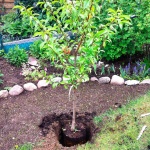
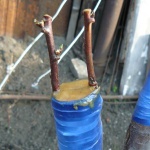
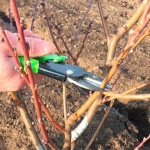
Frost resistance and the need for shelter
Collins is a very hardy crop. However, wintering in the northern regions still has problems. To make the tree as safe as possible, it must be properly prepared. So, the trunk circle is cleaned of plant debris and dug well. Then the trees are mulched and covered with spruce branches. Saplings under three years old are completely covered, along with the crown. For this, it is customary to use agrofibre.
Disease and pest resistance
Collins peaches are susceptible to disease when the region has hot and humid summers. Most often, plants attack fungal diseases. Both foliage and fruits suffer from them. To avoid any fungal ailments, plants are treated with fungicides in the spring. Such means are especially effective in preventing gray rot and clotterosporium disease.
Collins' main pests are moths, aphids and ticks. Insecticides will help to get rid of them. Aphids can often be removed with folk remedies, but only at the initial stages.
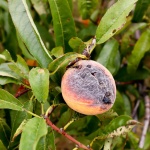
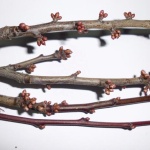
Review overview
About the Collins peach variety, summer residents leave mostly positive feedback. They really like the large-fruited culture, its unobtrusive pleasant color, delicate taste and aroma. Summer residents grow Collins peach easily, without spending a lot of time and money. However, they are upset that the bone is difficult to separate, and the tree is constantly attacked by diseases and pests.
